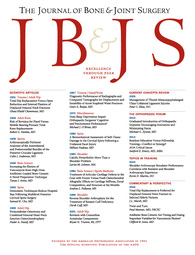
ARTHROPLASTY
Significantly greater alignment accuracy with robotic assistance in UKA
J Bone Joint Surg Am. 2016 Apr 20;98(8):627-35139 patients scheduled for unicompartmental knee arthroplasty were randomized to the procedure using either robotic-assistance technology or conventional instrumentation. The purpose of this study was to compare the accuracy of postoperative component alignment, relative to preoperatively planned alignment, between groups. Postoperative CT was performed at 3 months. The robotic-assistance group demonstrated significantly lower median error between pre- and postoperative alignment of femoral and tibial components in the sagittal, coronal, and axial planes when compared to the group which underwent surgery with conventional instrumentation.
Unlock the full ACE Report
You have access to {0} free articles per month.Click below to unlock and view this {1}
Unlock NowCritical appraisals of the latest, high-impact randomized controlled trials and systematic reviews in orthopaedics
Access to OrthoEvidence podcast content, including collaborations with the Journal of Bone and Joint Surgery, interviews with internationally recognized surgeons, and roundtable discussions on orthopaedic news and topics
Subscription to The Pulse, a twice-weekly evidence-based newsletter designed to help you make better clinical decisions
Exclusive access to original content articles, including in-house systematic reviews, and articles on health research methods and hot orthopaedic topics
Or upgrade today and gain access to all OrthoEvidence content for just $1.99 per week.
Already have an account? Log in


Subscribe to "The Pulse"
Evidence-Based Orthopaedics direct to your inbox.
{0} of {1} free articles
Become an OrthoEvidence Premium Member. Expand your perspective with high-quality evidence.
Upgrade Now












































































